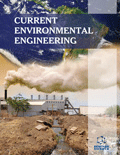Abstract
Background: Global industrialization has badly effect on environment and the entire biospheres. This distraction of the ecosystem has a hazardous effect on health of human and other organisms. Efforts should be made for dense vegetation of heavy metal bioaccumulation plants at the contaminated soil so that they can remove pollution and also give eco-green pleasant sense.
Methods: In the present research, effects of increasing concentrations of heavy metals in soil, on species in vitro was investigated and results showed that Datura inoxia can tolerate higher concentrations of four toxic heavy metals like Pb, Cd, Cr and Ni indicating its phytoremediation potential. Results: The study revealed that for each metal Datura inoxia had given better response in case of survival, which indicates its importance as a plant suitable for phytoremediation of heavy metal contaminated area. Conclusion: Datura inoxia was proved to be a potent plant species for heavy metal removal studies. The specialty of the plant was that in vitro plants cultured on M. S. medium were able to survive on higher concentrations of heavy metals. The Datura inoxia represent an identical plant suitable for phytoremediation which ranked among the highest according to their heavy metal accumulation trials and the tissue culture studies.Keywords: Biosphere, bioaccumulation, cadmium, chromium, ecosystem, lead, nickel, phytoremediation.
Graphical Abstract
 4
4

